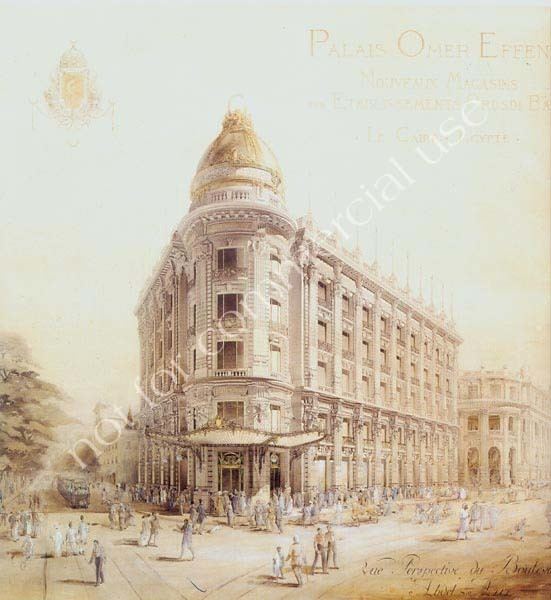 | ||
The Architectural Heritage And Urban Planning Documentation - "Architectural Heritage of Egypt Project" is part of the Center for Documentation of Cultural and Natural Heritage (CULTNAT). It is a pilot project focused on the historical Downtown Cairo district.
Contents
City context
Founded in 640 A.D, Cairo, the capital of Egypt, has a history that extends over two millennia. Established since the Fatimid era, Islamic Medieval Cairo, which is the oldest quarters of the city, is now declared as part of the Cairo World Heritage Site. Yet, Cairo offers an array of architectural styles besides the various Islamic ones, that remain poorly documented.
Until recently, no legislation protected these buildings from demolition and alterations, especially those less than a hundred years old, and maintenance laws were not respected. The Egyptian government has some of the most stringent rent control laws in the developing world, which are socially responsible, but retarded architectural conservation efforts. Consequently, Cairo’s rental property owners reduced or nearly discontinued maintaining their buildings and the costs and responsibility fell upon the interest and ability of the tenants. Historic buildings in Cairo have suffered tremendously on average from a hundred years of neglect.
Downtown Cairo
This is the case of the Downtown Cairo area, the first CULTNAT's Architectural Heritage And Urban Planning Documentation 'Architectural Heritage of Egypt' area of interest, it developed in the latter part of the nineteenth century extending to the first half of the nineteenth century. During the period between 1860 and 1940 in particular, a unique architecture combining European styles with local influences and materials was born. Post-1940 architecture often lost a sense of local uniqueness as the international style of modern architecture came to predominate new design and construction.
During this period between 1860 and 1940, Downtown Cairo witnessed a major building boom that gave birth to a unique architecture combining European city planning ('Paris on the Nile') and architectural styles (i.e.: Beaux-arts, Moorish Revival) with local design heritage influences and materials. The magnificent architectural product of that era will not be repeated, and no legislation protects historic buildings less than a hundred years old from demolition. The Cairene public awareness of this heritage is still forming, as national political and economic reformation is the focus.
Project
The purpose of CULTNAT’s 'Architectural Heritage of Egypt' project is to document the nineteenth and twentieth-century architectural heritage of Egypt, starting with the Downtown area of Cairo as a pilot project, and then continuing with more parts of Cairo and other cities. This project consists of a Geographic Information Systems (GIS) with an easy to browse database that includes photographic documentation, all published material for each inventoried building, in addition to historic documents, maps and archival material.
This large database can serve a variety of users, ranging from policy and decision makers to architects and historians, and the interested public. In the wealth of studies about architecture in Egypt, this type of systematic digital approach could eventually give access to documentation not focused on only one aspect, location, or style of Egyptian architecture.
In the meantime this database is limited to the Downtown Cairo pilot project. A series of thematic CD-ROMs, books, guides and other publications are developed from this database serving as cultural awareness tools.
